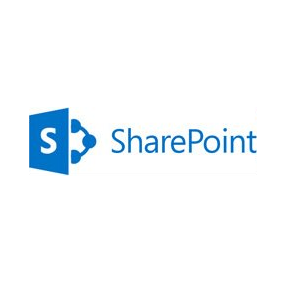SharePoint 2013 Integrates More Fully with the Cloud
3 min readIf you haven’t been paying attention, SharePoint 2013 is getting a cloud makeover. The new SharePoint platform is being released right on the heels of a newly designed Office 365 suite.
The question many companies continue to face is whether or not they’re ready to hand over the server management reins to a third-party. According to the Microsoft powers-that-be, companies won’t have to choose.
With SharePoint 2013, the enterprise wont be faced with choose either/or but both/and. The big idea is that companies can streamline business processes in a more meaningful way with Microsoft’s new and improved cloud server management technology.
In this post we’ll dig into the new release of SharePoint 2013 and how it can benefit your company and companies like yours. Partner with a Sharepoint host like Rackspace to get the most out of the new software.
The New SharePoint: Embracing a Hybrid Solution
What scares many companies about a cloud-focused SharePoint is that they will lose all the power and control over business processes with their on-premise version. Microsoft doesn’t necessarily get everything right, but they might have struck gold with this new cloud/on-premise hybrid approach to developing the latest version of SharePoint. In fact, they knew this would be an issue for many SharePoint 2013 adopters, so they didn’t do away with the on-premise side of SharePoint.
The reality is, however, that Microsoft fully expects companies to be impressed with the cloud capabilities of the new SharePoint. So much so that companies will quickly migrate from their locally hosted SharePoint platforms to the cloud-powered version. Why? Because the way it’s designed makes SharePoint cloud-hosting a cinch.
Migrating to SharePoint 2013
For those familiar with the latest versions of Microsoft products, migrating to the new SharePoint won’t be much of a stretch. You’ll likely notice similarities and consistencies across other applications like Outlook.com and Office 2013. The reboot of the SharePoint platform uses the same tiles and typography that allow users to easily access and distribute information across the platform.
On the other hand, if you’re making the jump from Microsoft 2010 products to the new SharePoint, there may be a bit of a learning curve. The interface is drastically different, so you’ll need to be prepared to train your staff accordingly.
Managing the new SharePoint
Setting up administration roles is crucial to the successful implementation of the new SharePoint version. That’s why not much has really changed. You can still easily assign specific roles and change them quickly as needed.
Collaboration
The real magic stuff of SharePoint comes down to real-time collaboration tools. The old tools you have come accustomed to – document libraries, rich preview, etc – have all been spruced up in this new version. You can easily view who has opened recently shared files and how they have changed in the collaboration process. Additionally, you can view multiple sites at a snapshot in one place.
Whether you’re embracing the cloud aspects of the new SharePoint or you’re simply looking to enhance what you’ve come to expect from hosting the platform locally, SharePoint is still in the business of connecting colleagues and collaborators in an efficient and meaningful way. But don’t be surprised if the power of the SharePoint cloud forces you into a new direction.





Many companies about a cloud-focused Share Point is that they will lose all the power and control over business processes with their on-premise version. it can benefit your company and companies like yours.